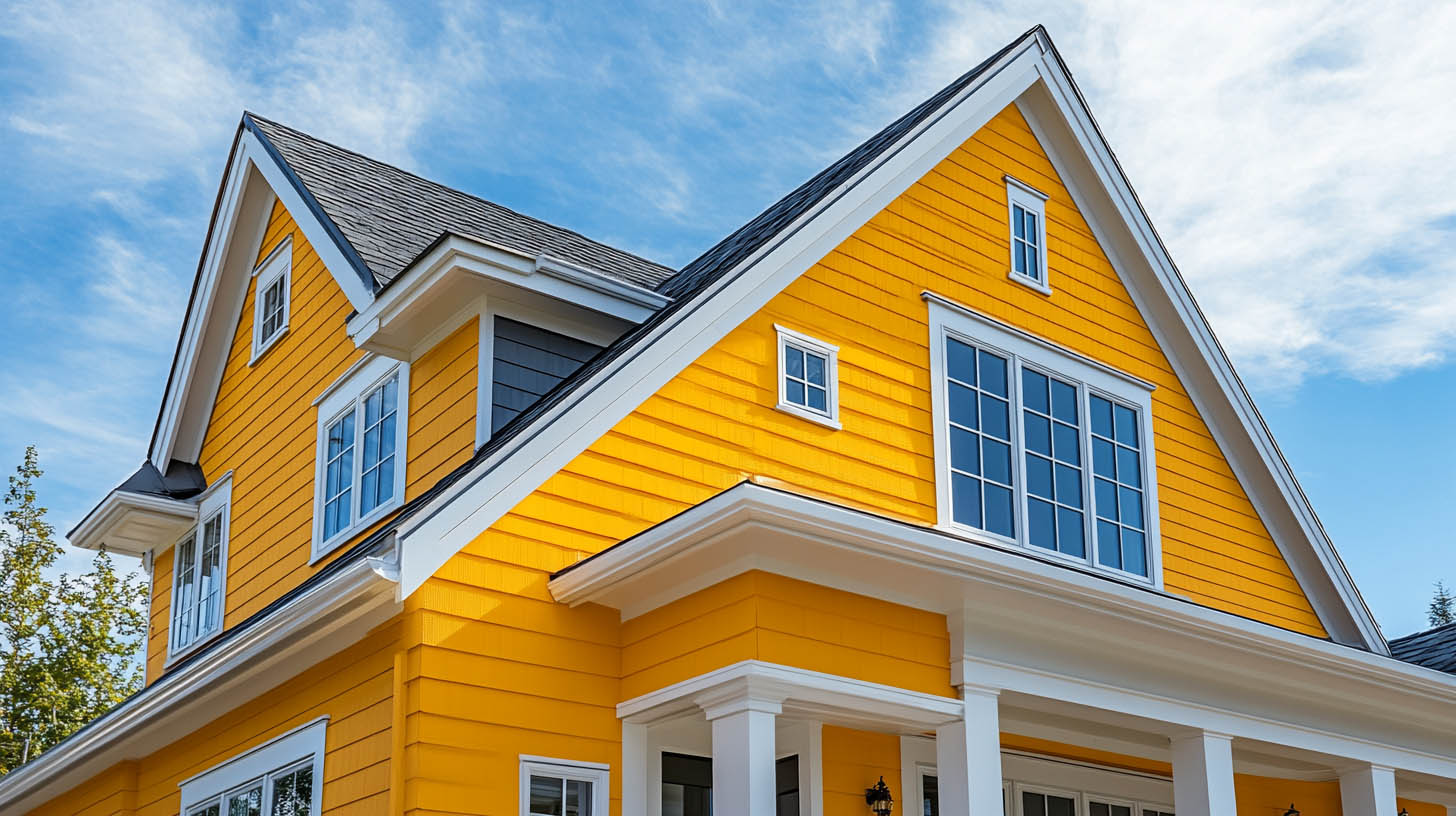
Siding is not only a key element in defining the exterior aesthetics of a home but also provides essential protection against harsh weather. Homeowners considering siding upgrades often have several questions about the materials, lifespan, and maintenance required. In this guide, we address the most frequently asked questions about siding to help you make informed decisions for your home. At Rainstoppers Roofing in Charleston, WV, we provide expert guidance to ensure you select the best siding for your home.
1. Why is Siding Replacement Necessary?
Siding is your home’s first defense against the elements, protecting it from rain, snow, and wind. High-quality siding insulates the home, reducing energy costs and keeping the indoor temperature consistent. Failing siding, however, can allow moisture to seep into the home’s structure, leading to issues like rot, mold, and even structural damage.
Signs Your Siding Needs Replacement
- Dry Rot: Weakens the structural integrity of your siding.
- Warped or Cracked Panels: Allow moisture to penetrate.
- Rising Energy Bills: Could indicate inadequate insulation.
- Moisture and Mold: Signal water infiltration.
Fact: Vinyl siding, the most popular choice in the U.S., offers a lifespan of over 100 years with minimal maintenance, making it one of the most durable siding options available.
2. What is the Best Siding Material?
Different siding materials offer unique benefits. Here’s a quick overview of popular siding types:
- Vinyl Siding: Durable, cost-effective, and available in various colors and textures, vinyl is resistant to rot, chipping, and blistering, making it a low-maintenance option.
- Wood Siding: Known for its natural appearance, wood provides excellent insulation but requires more maintenance to prevent decay.
- Fiber Cement Siding: Highly durable and resistant to fire, rot, and termites, this material can last up to 100 years.
- Stucco: Known for its durability and energy efficiency, stucco can last up to 80 years with proper care.
Consider the climate and architectural style of your home when choosing a material. For example, vinyl is popular in colder regions for its durability and insulating properties.
3. How Much Does New Siding Cost?
The cost of new siding depends on several factors, including the type of material, the size of your home, and labor costs in your area. Materials like fiber cement or high-end vinyl may have a higher upfront cost but offer long-term savings due to their durability and low maintenance requirements. Removal and disposal of old siding can also add to the project cost.
4. How Long Does Siding Last?
The longevity of siding varies widely based on the material and how well it’s maintained. Here’s a look at the average lifespans of popular siding materials:
- Vinyl: Over 100 years
- Fiber Cement: 60-100 years
- Stucco: 50-80 years
- Wood: 20-40 years, depending on maintenance
- Aluminum: 20-40 years
5. Does Siding Require Maintenance?
While some siding materials are low-maintenance, no material is truly maintenance-free. Routine upkeep is essential to prolong the lifespan of your siding. Key maintenance practices include:
- Cleaning: Use a garden hose every 6 to 12 months to remove dirt, mildew, and moss.
- Inspecting Joints: Check caulking annually and repair any gaps.
- Gutter Maintenance: Keep gutters clean and pointed away from the house to prevent water damage.
- Landscape Care: Trim plants away from the siding to avoid scratching and moisture retention.
FAQs
1. Can I install new siding over existing siding?
In some cases, new siding can be installed over old siding, depending on the current material and its condition. A professional can assess if this is viable or if removal is necessary.
2. How do I choose the right color for my siding?
Choose a color that complements your home’s architecture and surrounding landscape. Neutral tones are versatile, while bold colors can make your home stand out.
3. Is siding installation a DIY project?
Siding installation requires precision and expertise, so it’s generally best left to professionals. Improper installation can lead to gaps, leaks, and structural damage.
4. What’s the difference between vinyl and fiber cement siding?
Vinyl is a low-cost, low-maintenance option, while fiber cement is more durable and fire-resistant but typically costs more.
5. Does siding add to the value of my home?
Yes, high-quality siding improves curb appeal and energy efficiency, making it a valuable investment that can enhance resale value.
Conclusion
Choosing the right siding for your home involves weighing factors like material durability, cost, maintenance requirements, and aesthetics. With a wide variety of materials available, there’s a siding option to meet every homeowner’s needs. For professional assistance with siding installation or replacement, Rainstoppers Roofing is here to help you make informed choices that protect and enhance your home’s exterior.To learn more about green flags to look for when choosing a roofing contractor, click here.
